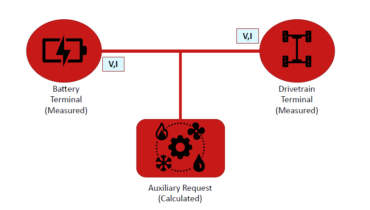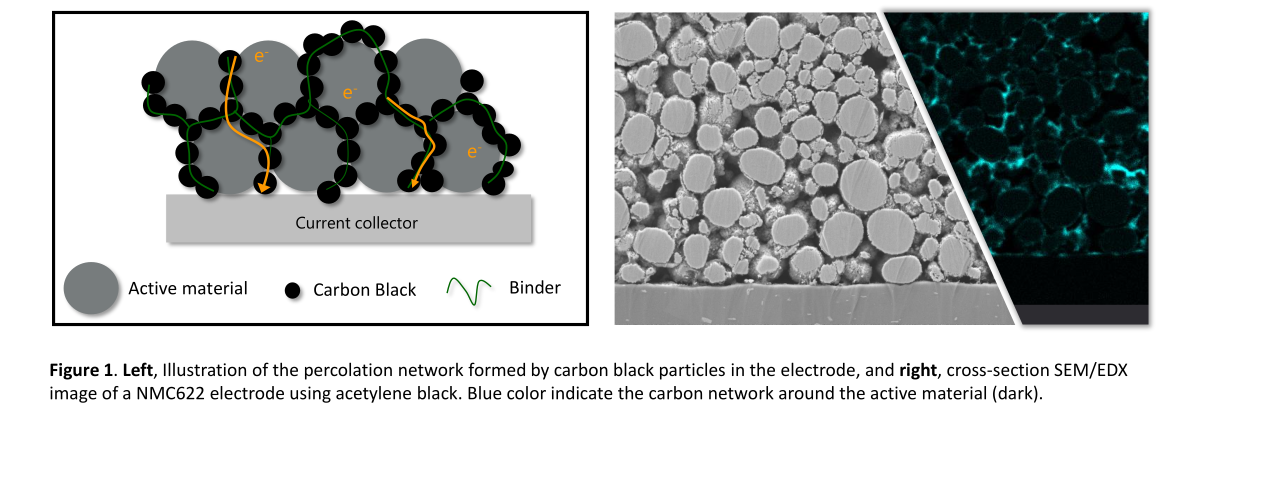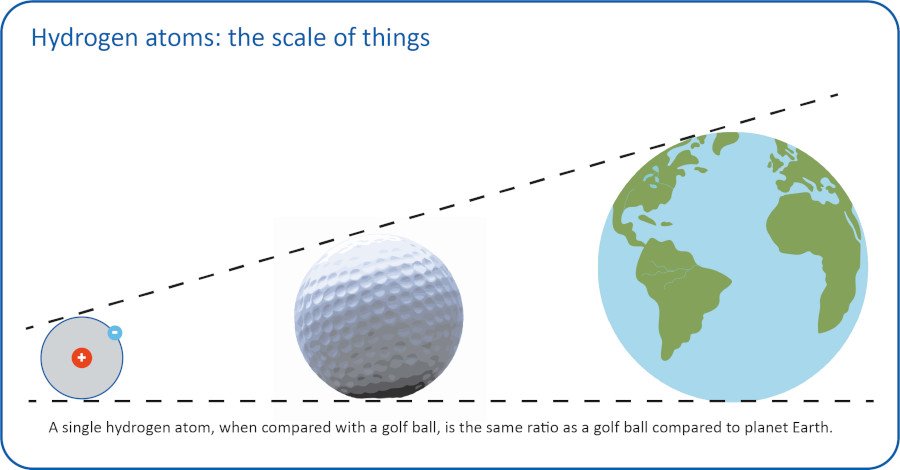A new online energy prediction model with an accuracy close to 99%…
The energy consumption of electric buses has proven to be more sensitive to driving style and external conditions, such as ambient temperature, than their fossil fuelled cousins. This sensitivity, coupled with a shorter range and the need to opportunity charge during the day, means that the operations in public transport is exposed to more volatility as well as planning uncertainty. This volatility requires bus operators to invest in additional battery capacity or to acquire more assets to service a concession. Or, alternatively, to adopt new tools and technologies that bring more visibility and adaptability to the operation. From an economical and sustainability point of view, the latter would seem the better choice.
Towards operational excellence in zero-emission public transport
In this magazine, we have previously covered some of the innovations coming out of the Cloud-Your-Bus (CYB) programme co-funded by EMEurope. CYB is a consortium of a group of technology leaders and technical universities and with a mission to create operational excellence in zero-emission public transport. This article deals with a unique algorithm that has been developed by the Technical University of Eindhoven (TU/e) together with IoT and telematics company Sycada and which allows for accurate SoC prediction at the end of a route just shortly after that the vehicle has commenced its journey.
The SoC prediction challenge, closer to solved
Accurately predicting the energy consumption of a bus on a given route is one of those critical tools, but it is not a trivial task to accomplish a high level of accuracy. Current energy consumption prediction models suffer from several practical and computational limitations and, often, fail to factor in environmental and contextual parameters. Hence, they have limited real value in a dynamic operational or bus planning context. As a result, most, if not all, bus operators plan their zero-emissions operations based on limited historical datasets for buses and routes. But these estimations are inherently inaccurate with an error margin up to 40%.
The online energy consumption prediction model developed by the TU/e and Sycada in the context of CYB has shown to bring this error margin down to an average close to 1%.
When made available to bus operators, the more accurate information can facilitate better, and faster decision making and help optimise route and charge planning throughout the day. This in turn has a massive positive impact on both capital (Capex) and operational (Opex) expenses and will help accelerate the transition to zero-emission public transport in Europe and beyond.
A new algorithmic approach
The challenge that the CYB researchers gave themselves was to develop a prediction algorithm for electric city buses which does not rely on plenty of vehicle parameters and time series to be accurate. In fact, the model only requires two parameters, along with a chosen route and its recorded characteristics, to be updated in real-time.
The model is divided in two parts: an offline and an online algorithm. The offline model uses the historical data to generate an initial estimate of the energy consumption. The online model will correct the prediction result by adjusting the vehicle mass value. Additionally, the online approach is based on a recursive algorithm to adjust only two parameters, which greatly reduces the complexity and practical (computing) limitations during the operation.
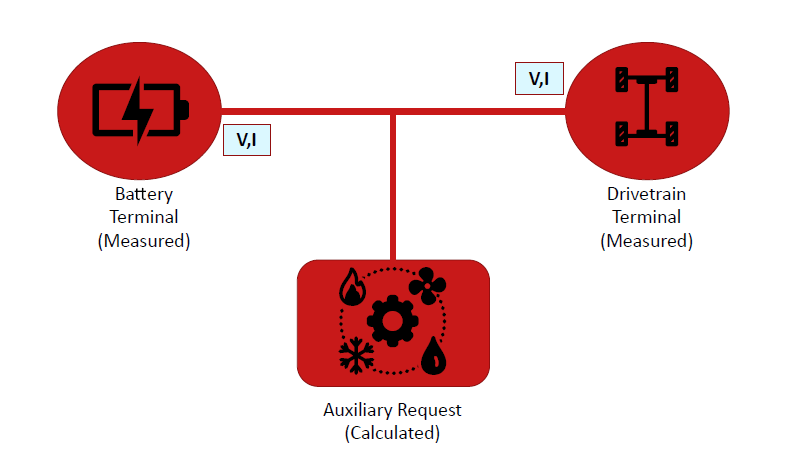
Offline estimates based on historical data
For a given route from location A to location B, relevant data can be collected repeatedly to establish a historical energy usage database. The essential signals consist of the time of day, vehicle location and speed, battery voltage, battery current, drivetrain voltage and drivetrain current. These datasets are collected via a wireless gateway that connects to the CANbus system(s) in the bus. Assuming that the sampling frequency is identical for all signal channels and the data lengths for all channels are identical, the reference profile and reference auxiliary power profile can be obtained. Using the profiles, the initial energy consumption estimate can be done.
The adjacent figure shows the energy consumption (black line as reference profile) for a specific route calculated based on measured drivetrain and auxiliary power profiles over 16 different cycles. Because the vehicle mass is assumed as a constant, and the time for operating the auxiliary system is fixed, the estimated total energy consumption for the investigated route is fixed as well.
The adjacent figure shows the energy consumption (black line as reference profile) for a specific route calculated based on measured drivetrain and auxiliary power profiles over 16 different cycles. Because the vehicle mass is assumed as a constant, and the time for operating the auxiliary system is fixed, the estimated total energy consumption for the investigated route is fixed as well.
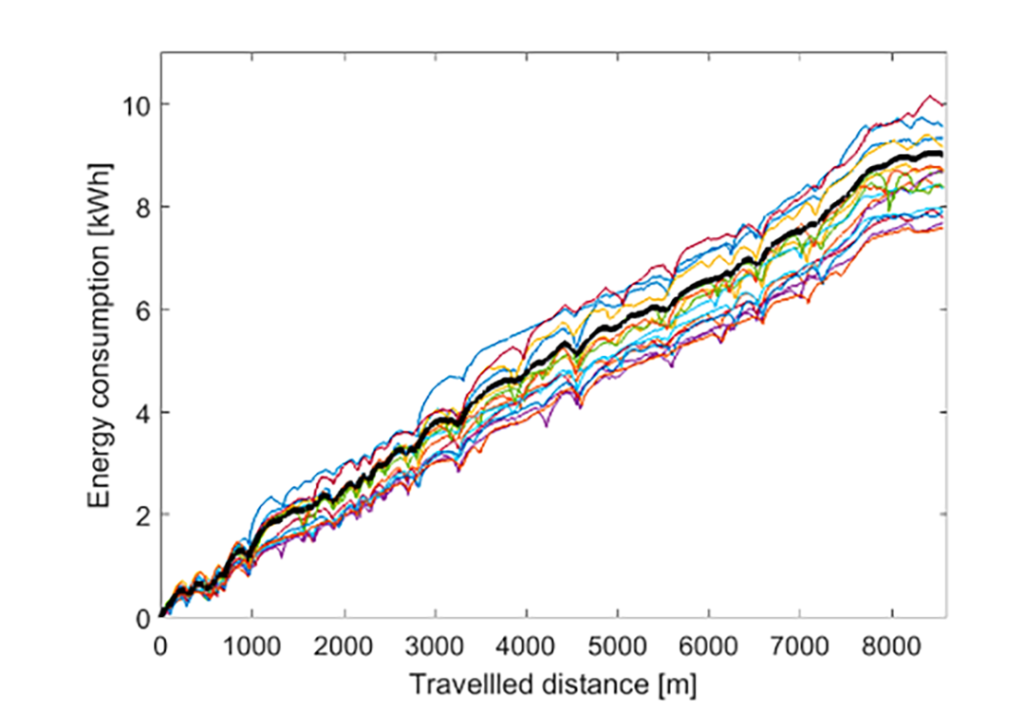
Online corrections with tuning parameters
However, in case of electric city buses the drive-train power request is significantly influenced by the load of passengers being carried for a particular trip on a given route. The auxiliary request is influenced by several factors, one of the most dominant is ventilation and air conditioning. Both terms are subject to change as the trip progresses and requires the algorithm to make relevant corrections in real time. The two parameters needed to be updated are mass-estimate for drive-train power estimation and correction gain-estimate for auxiliary estimation. All other influencing factors on energy estimation are considered as perturbation.
Impressive level of prediction accuracy
Live test results confirm that the real-time estimation model is an advanced system capable of estimating the approximate energy consumed by the electric city bus over the given route well in time and is also producing robust results over different data cycles.
In offline estimations the absolute error over some cycles would go as high as 40 % and on an average remains at 18.5%. On the other hand, in real-time (online) energy estimations the absolute error was under 4 % and on an average remains 1.2%.
This illustrates the superior performance of the real-time energy estimation system developed by TU/e and Sycada.

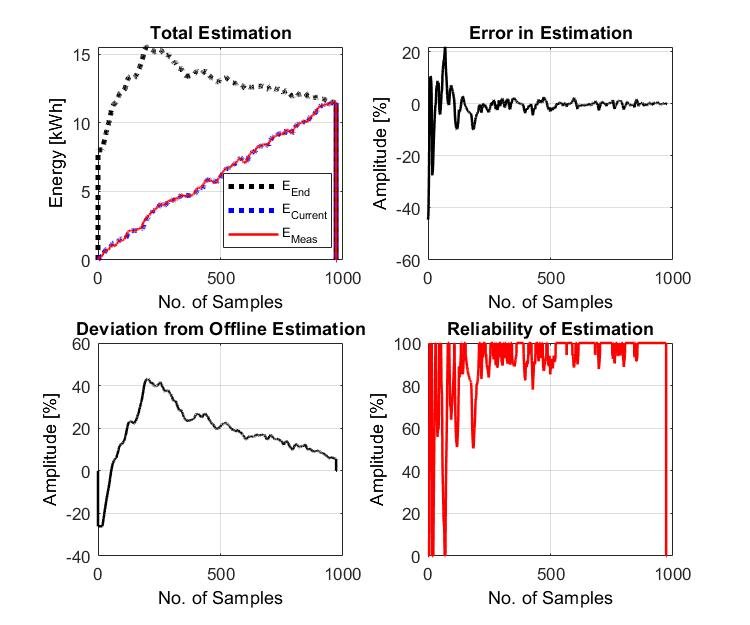
In the adjacent figure the results are compiled for the progression of the absolute error in estimation for all available data cycles with the reference profile used as base data profile. As more data is made available, the resulting error rate decreases and eventually becomes bounded around zero. The performance of the real-time energy estimation is exceptionally good in the region from around 20-25% of the travelled distance along the route.
The new model is particularly useful in public transport operations where the distance for lines and rotations are known and fixed.
Input for adaptive line and charge planning
“The practical usability of the model is twofold”, says Kristian Winge, CEO of Sycada. “Firstly, it allows for early flagging of critical deviations from assumptions that can ruin the current day-to-day operational planning and hence require adaptations. Secondly, it allows for continuous improvements in tactical line- and charge planning by creating more transparency in the impact of passenger load, environmental factors, seasonality and time of day on energy usage patterns”.

